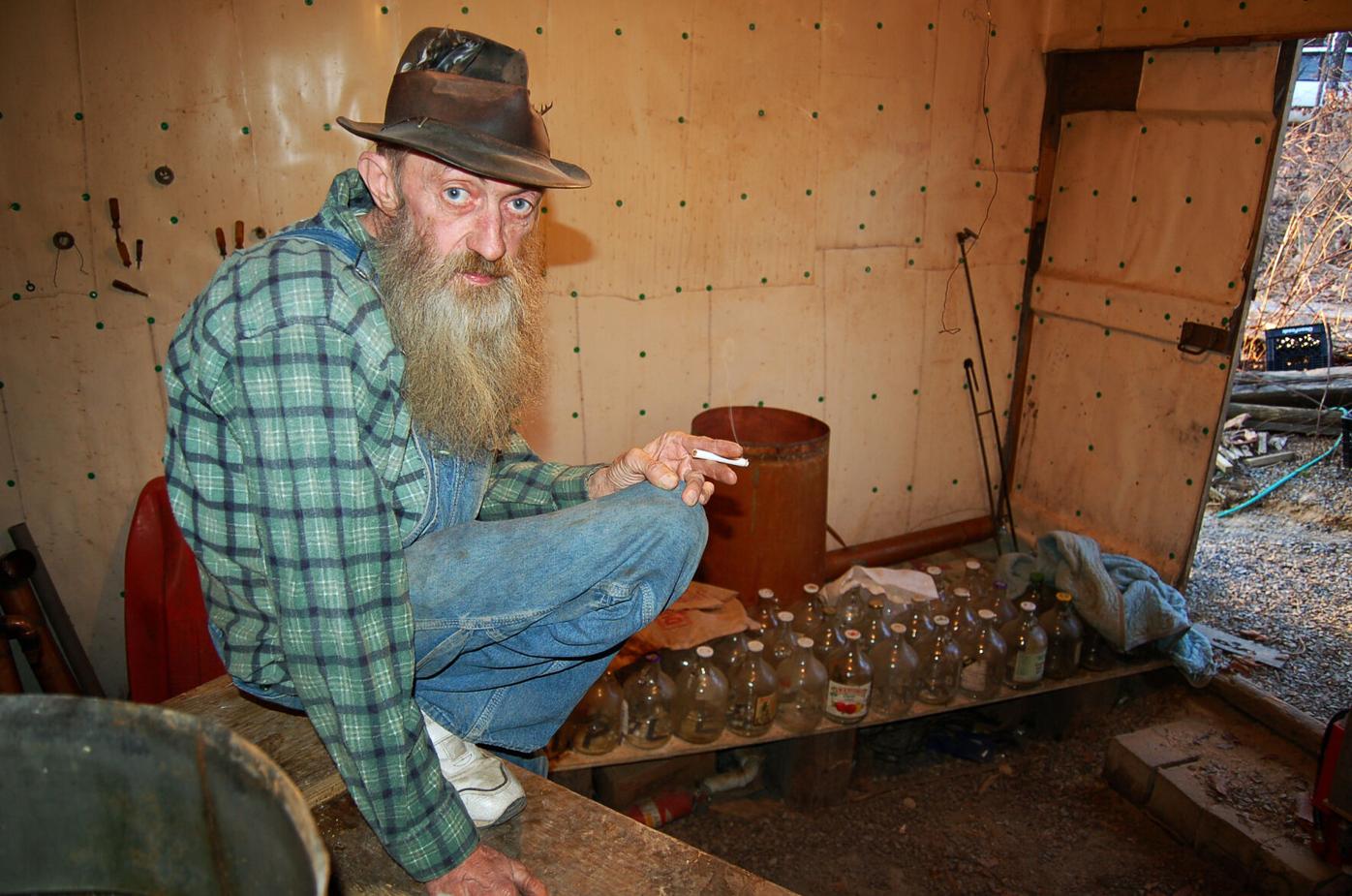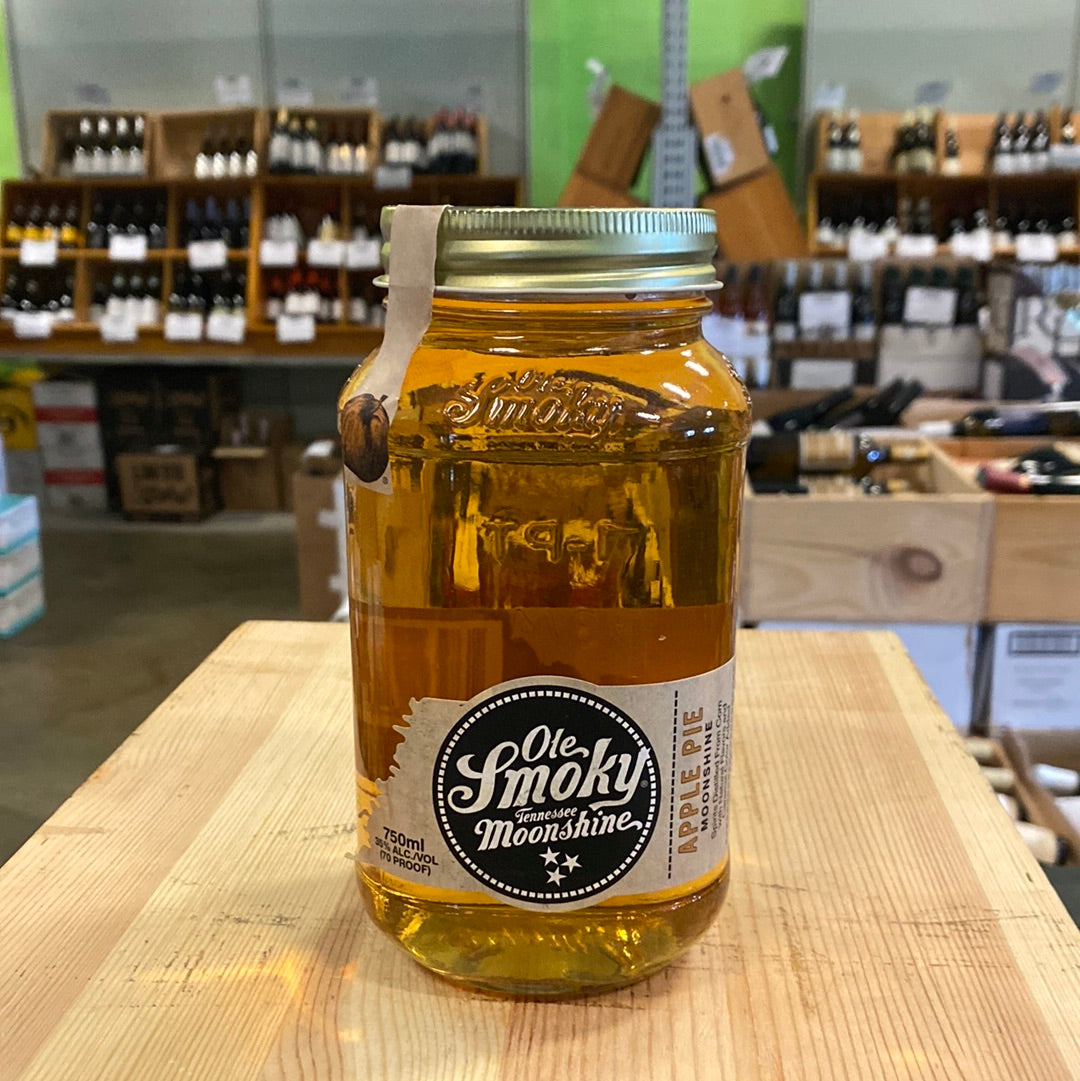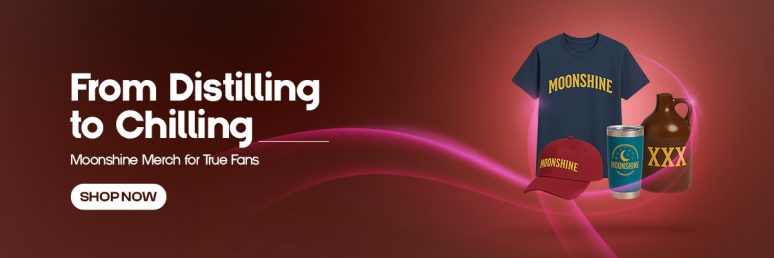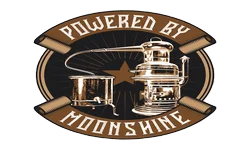Popcorn Sutton Moonshine: A Closer Look at the Legendary Man and His Legacy

Key Takeaways: The Truth Behind the Moonshine Legend
- Popcorn Sutton transformed from a local Appalachian moonshiner into an American folk hero through his unapologetic approach to an illegal craft spanning over 50 years.
- Sutton’s moonshine recipe used a specific corn-to-sugar ratio and pure mountain water, creating a smoother, more refined product than typical backwoods liquor.
- Despite numerous run-ins with the law, Sutton managed to build a moonshine empire in Cocke County, Tennessee, producing thousands of gallons annually.
- The 2008 documentary “This is the Last Dam Run of Likker I’ll Ever Make” catapulted Sutton to national fame shortly before his 2009 death.
- Today, Good Ol’ Moonshine and other craft distilleries continue Sutton’s legacy through legal white whiskey that honors traditional mountain methods.
The name Popcorn Sutton echoes through the hills of Appalachia like thunder before a summer storm. For those who appreciate American spirits in their purest form, his legacy represents the uncompromising spirit of mountain independence. What made this small-statured man with the wispy beard and ever-present hat so legendary wasn’t just his moonshine – it was his defiance of a system that tried to regulate a tradition older than the country itself.
The Real Popcorn Sutton: Appalachian Moonshine Pioneer

“Popcorn Sutton – Wikipedia” from en.wikipedia.org and used with no modifications.
Born Marvin Sutton in Maggie Valley, North Carolina in 1946, Popcorn wasn’t just another backwoods distiller – he was a third-generation moonshiner who refined his craft into an art form. While legitimate distilleries followed regulations and paid taxes, Sutton continued the time-honored tradition of making untaxed whiskey using methods passed down through generations. His approach wasn’t simply about avoiding taxation; it was about preserving a cultural heritage that predated Prohibition by centuries.
What made Sutton extraordinary was his willingness to operate in plain sight during an era when most moonshiners had gone deeply underground. He openly sold his product, gave demonstrations, and eventually documented his methods in books and film – all while federal authorities were actively prosecuting illegal distillers. This brazen approach reflected his deeply-held belief that he was practicing his rightful heritage rather than committing a crime.
From Marvin to “Popcorn”: How He Got His Famous Nickname
The moniker “Popcorn” wasn’t something Marvin Sutton was born with – it came from an incident in a bar that became part of his colorful legend. The story goes that Sutton became so enraged at a malfunctioning popcorn vending machine that he attacked it with a pool cue, smashing it to pieces in a fit of frustration. The name stuck, becoming inseparable from his identity and perfectly capturing his explosive temperament.
Those who knew him personally described a man of contradictions – capable of warm generosity one moment and fiery rage the next. Sutton embraced the nickname and the persona that came with it, understanding that his character was as much a part of his brand as the moonshine itself. With his overalls, long beard, and ever-present hat, he cultivated an image that came to represent mountain authenticity in an increasingly homogenized world.
Deep Roots in Appalachian Moonshine Tradition
Moonshine production in Appalachia dates back to the late 1700s, when Scottish and Irish immigrants brought their whiskey-making traditions to America’s mountains. When the federal government began taxing spirits in 1791, many of these fiercely independent settlers refused to pay, beginning America’s long tradition of illicit distilling. For families like the Suttons, moonshining wasn’t just a business – it was cultural resistance against outside interference. If you’re curious about the process, you might wonder how much whiskey a 5-gallon still can produce.
Popcorn learned the craft from his father and grandfather, absorbing not just recipes and techniques but a philosophy that valued self-sufficiency above all else. In the isolated hollows of western North Carolina and eastern Tennessee, making moonshine wasn’t viewed as criminal activity but as an honest way to convert corn crops into a more valuable and preservable product. These mountain communities had limited access to markets and money, making moonshine an essential part of the local economy.
By the time Sutton began distilling in the 1960s, most commercial moonshiners had abandoned the craft due to increased law enforcement pressure. Yet Sutton not only continued but expanded his operations, becoming one of the last major producers of traditional Appalachian moonshine. His persistence preserved a cultural tradition that might otherwise have disappeared entirely from American life.
Inside Popcorn’s Famous Moonshine Recipe

“Lonesome Death of Marvin ‘Popcorn’ Sutton” from www.theassemblync.com and used with no modifications.
What set Sutton’s moonshine apart wasn’t flashy marketing or fancy packaging – it was an uncompromising commitment to quality that many commercial distillers had abandoned. His recipe remained remarkably consistent throughout his career, built around a foundation of corn, sugar, and pure mountain water. While many moonshiners cut corners by using more sugar than corn (creating a harsher product), Sutton maintained higher corn ratios that produced a smoother, more authentic whiskey.
The Secret Ingredients That Made His Whiskey Special
Sutton’s base recipe typically called for 25 pounds of ground white corn meal, 100 pounds of sugar, and 6-8 gallons of malt – proportions he adjusted slightly depending on the season and available ingredients. What truly distinguished his product was his insistence on clean, mineral-rich mountain spring water rather than tap water, giving his moonshine a distinctive character that couldn’t be replicated elsewhere. The corn came from local farmers rather than commercial suppliers, ensuring freshness and supporting the local agricultural economy.
The Secret Ingredients That Made His Whiskey Special
Sutton’s base recipe typically called for 25 pounds of ground white corn meal, 100 pounds of sugar, and 6-8 gallons of malt – proportions he adjusted slightly depending on the season and available ingredients. What truly distinguished his product was his insistence on clean, mineral-rich mountain spring water rather than tap water, giving his moonshine a distinctive character that couldn’t be replicated elsewhere. The corn came from local farmers rather than commercial suppliers, ensuring freshness and supporting the local agricultural economy.
Unlike many moonshiners who added flavorings to mask impurities, Sutton relied on careful distillation to create a clean product that needed no additives. When he did flavor his whiskey, he used traditional mountain ingredients like apple peels or cinnamon sticks rather than artificial flavorings. This commitment to authenticity earned him a reputation for producing some of the finest unaged whiskey in Appalachia.
- White corn meal (25 pounds) – provided a sweeter, cleaner flavor than yellow corn
- Cane sugar (100 pounds) – fermented quickly while complementing the corn’s natural sweetness
- Malt (6-8 gallons) – converted starches to fermentable sugars and added complexity
- Mountain spring water – mineral content contributed to distinctive flavor profile
- Brewer’s yeast – carefully selected strains that thrived in Sutton’s specific fermentation conditions
Copper Stills and Mountain Water: Popcorn’s Distilling Process
The heart of Sutton’s operation was his handcrafted copper still, a design he refined over decades of production. While modern distilleries often use stainless steel, Sutton insisted on copper for its superior heat conduction and ability to remove sulfur compounds during distillation. His stills typically featured a large pot connected to a copper worm (condensing coil) submerged in cold mountain stream water – a setup that hadn’t changed fundamentally since the 1700s. If you’re curious about what causes moonshine stills to explode, understanding the traditional methods can offer some insights.
His fermentation process was equally traditional, allowing his mash to ferment naturally in wooden barrels for 4-6 days depending on ambient temperature. Sutton refused to rush this crucial stage, understanding that proper fermentation was essential to developing the complex flavors that distinguished quality moonshine from inferior products. He monitored this process carefully, judging readiness by smell, taste, and the cessation of bubbling as the yeast completed its work.
The distillation itself required precision timing and temperature control, skills Sutton had mastered through decades of practice. He meticulously separated the “heads” (first distillate containing methanol and other harmful compounds) and “tails” (final distillate with fusel oils and unwanted flavors), keeping only the pure “hearts” of each run. This careful separation, often neglected by less experienced moonshiners, was crucial to producing a smooth, clean spirit that wouldn’t cause the infamous “moonshine headache.”
Why His Moonshine Tasted Different From Commercial Whiskey
Commercial whiskey follows strict regulations regarding ingredients, aging, and proof, resulting in a relatively standardized product. Sutton’s moonshine, unbound by these regulations, offered a rawer, more authentic expression of the grain. Without barrel aging to mellow the spirit, his whiskey presented a direct, unmediated connection to the Appalachian soil and water that produced it.
At typically 100-130 proof (50-65% alcohol), Sutton’s moonshine was significantly stronger than commercial spirits but remarkably smooth for its strength. This smoothness came not from dilution but from careful distillation and a deep understanding of how to create a clean product. Tasters described notes of sweet corn, fresh bread, and subtle minerality – flavors that connected directly to the mountain landscape where it was produced.
“They call it moonshine because it was made by the light of the moon. Making whiskey back in the mountains, you didn’t want the revenue to see your smoke in the daytime, so you fired your still at night when the smoke couldn’t be seen so easy.” – Popcorn Sutton
The Moonshiner’s Life in the Mountains

“Central Oregon Mountains Aerial …” from andrewstuder.com and used with no modifications.
The romantic image of the solitary moonshiner working by lantern light tells only part of Sutton’s story. In reality, he operated a sophisticated production network that at its peak produced thousands of gallons annually. While maintaining multiple still sites throughout the mountains, Sutton developed an extensive distribution network that reached far beyond local communities into major cities across the Southeast.
His operation required coordination between corn suppliers, sugar providers, lookouts, drivers, and sellers – all operating outside official channels. The business demonstrated remarkable resilience, adapting to increased law enforcement pressure by becoming more mobile and harder to track. When authorities became too persistent in one area, Sutton would simply relocate to another remote hollow, setting up his still in locations accessible only by four-wheel drive or on foot.
Dodging Revenuers: How Popcorn Stayed One Step Ahead
The cat-and-mouse game between moonshiners and law enforcement has deep roots in Appalachian culture, with strategies evolving over generations. Sutton employed classic evasion techniques: operating at night, using remote locations, and maintaining an extensive network of lookouts who would warn of approaching authorities. His still sites were carefully chosen for quick escape routes and natural camouflage, often located near streams that could quickly disperse evidence if authorities approached. If you’re curious about the intricacies of moonshine production, including how much whiskey a 5-gallon still can produce, there’s plenty to explore.
Technology played a surprising role in Sutton’s operations as he adapted to modern law enforcement techniques. He used police scanners to monitor officer movements and eventually employed cell phones to coordinate his network more effectively. When aerial surveillance became common, he developed methods to disperse or hide the smoke from his stills, such as running the smoke through underground pipes to emerge far from the actual still site.
Perhaps his most effective strategy was hiding in plain sight, cultivating a public persona that made his moonshining activities seem like cultural preservation rather than criminal enterprise. By presenting himself as a living repository of mountain traditions, he gained public sympathy that sometimes extended even to local law enforcement, who might look the other way rather than arrest someone they viewed as preserving regional heritage.
The Cocke County Operation: Building a Moonshine Empire
Cocke County, Tennessee became the center of Sutton’s largest operations, an area with a long-established reputation as a moonshine capital. Here, Sutton expanded beyond personal production to coordinate multiple still sites operated by a network of trusted associates. At its peak in the 1980s and 1990s, this operation produced an estimated 500-800 gallons weekly, distributed through channels reaching into Georgia, Kentucky, and the Carolinas.
The economic impact of Sutton’s operation extended beyond his immediate circle. His business provided supplemental income for local farmers who sold him corn, created jobs for transporters and sellers, and brought outside money into an economically depressed region. Many families in the area relied on moonshine-related income to survive difficult economic times as traditional industries like mining and manufacturing declined.
Despite the scale of his operation, Sutton maintained strict quality control by personally training each stillman and regularly testing product from every still site. This commitment to consistency allowed him to build a loyal customer base willing to pay premium prices for his moonshine, creating a recognizable “brand” long before he entered the public spotlight. If you’re curious about the production process, you might want to explore how much whiskey a 5-gallon still can make.
From Outlaw to Celebrity: Popcorn’s Rise to Fame

“Popcorn Sutton Interviews …” from www.youtube.com and used with no modifications.
For most of his life, Sutton operated in relative obscurity outside Appalachia, known primarily to moonshine enthusiasts and local authorities. This changed dramatically in the early 2000s when he began to embrace public attention rather than avoid it. As traditional moonshining declined under pressure from law enforcement and changing consumer preferences, Sutton seemed to recognize that his greatest value might be as a cultural ambassador rather than just a producer. Learn more about other moonshine legends who have also embraced the spotlight.
“This is the Last Dam Run”: The Documentary That Changed Everything
In 2008, filmmaker Neal Hutcheson captured what Sutton claimed would be his final moonshine production run in the documentary “This is the Last Dam Run of Likker I’ll Ever Make.” The film provided unprecedented access to Sutton’s complete process, from gathering ingredients to final distillation, narrated in his distinctive mountain dialect. Viewers were mesmerized by this unfiltered glimpse into a vanishing tradition, guided by a charismatic figure who seemed to have stepped out of another era.
- The documentary showcased Sutton’s complete production process from beginning to end
- Sutton’s colorful language and unfiltered opinions about government regulation captivated viewers
- The film captured authentic Appalachian traditions rarely seen by outsiders
- Footage included detailed explanations of techniques passed down through generations
- The documentary preserved Sutton’s knowledge for future generations of craft distillers
What began as a regional documentary unexpectedly found a national audience, turning Sutton into an unlikely celebrity during the final years of his life. The film resonated with viewers far beyond Appalachia, tapping into American fascination with self-reliance, traditional craftsmanship, and resistance to authority. Suddenly, Sutton found himself featured in major publications and television programs, his weathered face becoming the public image of mountain moonshine.
The documentary’s success stemmed partly from its timing, arriving just as interest in traditional foods and beverages was surging nationwide. Craft distilling was in its early stages of revival, and viewers were increasingly interested in authentic, non-corporate food traditions. Sutton’s knowledge, accumulated over decades of illegal production, suddenly became valuable cultural capital in an era hungry for authenticity and tradition.
Popcorn’s Self-Published Moonshine Manual
Not content with just appearing in a documentary, Sutton self-published “Me and My Likker” in 1999, a rambling, unedited manifesto that detailed his moonshining philosophy and techniques. The hand-bound book, sold from the trunk of his car for $25, became a collector’s item almost immediately. Written in his distinctive vernacular and filled with unfiltered opinions on everything from government regulation to proper still construction, the book preserved knowledge that might otherwise have been lost with his passing.
The book’s value went beyond its moonshine recipes, offering a window into Appalachian life rarely accessible to outsiders. Sutton documented not just distilling techniques but the entire cultural ecosystem surrounding moonshine – from how to choose still locations to dealing with law enforcement. His writing captured a way of life that was rapidly disappearing from the American landscape, preserving it for future generations.
Legal Troubles and Final Days

“Legal Dispute …” from www.pitcofflawgroup.com and used with no modifications.
Ironically, Sutton’s increasing fame made him a more visible target for federal authorities. While he had managed numerous run-ins with local law enforcement throughout his career, his public profile eventually attracted federal attention that would prove his undoing. The same openness that endeared him to fans ultimately contributed to his legal downfall. For more on his life, check out this detailed account of Popcorn Sutton.
The 2008 Federal Conviction
In March 2008, federal agents raided Sutton’s property in Parrottsville, Tennessee, discovering three active stills, hundreds of gallons of moonshine, and materials for making thousands more. Despite his advanced age and deteriorating health, authorities pursued charges aggressively, perhaps seeing an opportunity to make an example of America’s most famous moonshiner. Sutton pleaded guilty to illegal distilling and possession of a firearm as a felon, facing an 18-month prison sentence.
For a fiercely independent 62-year-old man in poor health, the prospect of federal prison represented not just confinement but a complete loss of the freedom that had defined his existence. Friends reported that Sutton became increasingly despondent as his reporting date approached, unable to imagine life behind bars. The courts denied requests for house arrest or alternative sentencing, setting the stage for Sutton’s final act of defiance.
Popcorn’s Tragic Final Decision
On March 16, 2009, rather than report to federal prison, Popcorn Sutton took his own life through carbon monoxide poisoning in his beloved Ford Fairlane. His suicide note reportedly stated he would “go out on his own terms,” a final assertion of the independence that had characterized his entire life. The news of his death spread quickly through Appalachia and beyond, transforming an already legendary figure into a folk martyr who chose death over surrendering his freedom.
His funeral drew hundreds of mourners, including family, friends, fans, and even some of the law enforcement officers who had pursued him over the years. In accordance with his wishes, Sutton was buried in a simple pine coffin in the mountains he called home, with jars of his moonshine placed in the casket alongside him. The ceremony reflected the complex legacy of a man who had lived his entire life on his own uncompromising terms.
The Sutton Legacy Lives On

“moonshiner Popcorn Sutton …” from www.themountaineer.com and used with no modifications.
Despite his death, Popcorn Sutton’s influence on American spirits has only grown stronger. Within months of his passing, his widow Pam Sutton partnered with Hank Williams Jr. to create a legal version of his famous recipe, bringing Popcorn Sutton’s Tennessee White Whiskey to market in 2010. The legitimate product maintained much of his traditional process while complying with federal regulations, introducing his flavor profile to a much wider audience than ever could have accessed his illegal product.
Hank Williams Jr. and the Commercial Popcorn Sutton’s Tennessee White Whiskey
The commercial version of Sutton’s moonshine represented an ironic twist in his legacy – the outlaw’s recipe transformed into a tax-paying, legally regulated product. Yet the commercial operation took pains to honor his methods, using a copper pot still system similar to his original equipment and maintaining his insistence on quality ingredients. While purists might debate whether the legal version truly captured the essence of Sutton’s original product, it certainly brought his name and approach to a national market.
The commercial venture proved remarkably successful, with distribution expanding across the Southeast and eventually nationwide. In 2013, the company was acquired by spirits giant Sazerac (makers of Buffalo Trace bourbon), further legitimizing what had once been the definitive illegal liquor. Though production methods evolved under corporate ownership, the brand continued to trade on Sutton’s authentic image and story.
How Modern Craft Distillers Honor Popcorn’s Methods
Beyond the official brand bearing his name, Sutton’s influence permeates the modern craft distilling movement. Many small distilleries producing unaged corn whiskey acknowledge his influence, adopting aspects of his production methods and his emphasis on quality ingredients. The craft distilling revival that began in the early 2000s owes much to pioneers like Sutton who preserved traditional techniques through decades when they might otherwise have been lost.
Distillers from Tennessee to Oregon now produce “legal moonshine,” often consulting Sutton’s book and documentary for authentic methods. His insistence on copper equipment, specific corn-to-sugar ratios, and careful separation of heads and tails during distillation have become standard practices for quality white whiskey production. While these distillers operate within the law, they often cite Sutton as their spiritual predecessor and technical inspiration.
- Copper still designs based on Sutton’s models are now manufactured commercially
- His corn meal ratio and fermentation techniques have been widely adopted
- Many craft distillers display his image or quote him in their tasting rooms
- Books and courses on craft distilling frequently reference his methods
- Several distilleries offer “tribute” products inspired by his recipes
What Today’s Legal Moonshine Owes to Popcorn
The category now marketed as “legal moonshine” would likely not exist without Sutton’s influence. By documenting and demonstrating traditional methods just as craft distilling began its renaissance, he provided a blueprint for authentic white whiskey production that distinguished it from mere unaged commercial spirits. His emphasis on quality and consistency established standards that helped elevate white whiskey from its reputation as rough mountain liquor to a respected craft product. For those interested in the fermentation process, understanding why your moonshine mash might not be bubbling can be crucial in replicating Sutton’s methods.
Perhaps more importantly, Sutton’s colorful personality and compelling story gave the category a marketable narrative that resonated with consumers. His authentic mountain character provided the perfect origin story for a spirit category seeking to distinguish itself in the crowded marketplace. Even distillers with no direct connection to Appalachian traditions benefit from the mystique that Sutton helped establish around traditional moonshine production.
Separating Fact From Fiction: The Real Popcorn Sutton Story

“Separating Fact From Fiction by Eric Haines” from eric-haines.pixels.com and used with no modifications.
As with any legendary figure, separating the man from the myth becomes increasingly difficult with time. Sutton himself was not above embellishment, understanding that a good story often served his purposes better than strict accuracy. Many anecdotes attributed to him have grown with each retelling, creating a larger-than-life character that sometimes overshadows the real person and his actual accomplishments. For those interested in the technical side of moonshine, you might wonder how much liquor 10 gallons of mash can make.
Debunking Common Myths About the Mountain Legend
Contrary to popular belief, Sutton was not a third-generation moonshiner who never worked a legitimate job. Records show he operated various legal businesses throughout his life, including a furniture store and junk shop. His moonshining, while significant, was often supplemental income rather than his sole livelihood until later in life when his fame made it more profitable.
Another persistent myth suggests Sutton never sold poor-quality moonshine, always maintaining perfect standards. Those familiar with his actual operation acknowledge that like any producer, quality could vary between batches, especially during periods of increased law enforcement pressure when production might be rushed. While his standards were generally higher than most, the romanticized notion of unfailing perfection belongs more to marketing than reality.
Perhaps the most significant misconception involves Sutton’s self-created image as the “last” traditional moonshiner. In reality, illegal distilling continues throughout Appalachia today, practiced by individuals who maintain a much lower profile than Sutton ever did. His genius was not being the last of his kind but being willing to become the public face of a tradition that continues largely in secret.
The Man Behind the Character: What Few People Knew About Marvin Sutton
Behind the carefully cultivated public persona, Marvin Sutton was more complex than his “Popcorn” character suggested. Friends described a man with a sharp business mind who understood marketing and self-promotion better than his rustic image would suggest. He was widely read despite his limited formal education, with a particular interest in Appalachian history and local politics. His library contained numerous books on distilling traditions from around the world, indicating a scholarly interest in his craft that went beyond practical application.
Those closest to Sutton noted his generosity toward neighbors in need, often providing financial assistance anonymously to families facing hardship. Despite his gruff exterior and frequent conflicts with authorities, he maintained a code of ethics that included never selling to minors and refusing to do business with those who couldn’t handle alcohol responsibly. These principles reflected a moral framework that existed alongside his willingness to break laws he considered unjust.
How to Appreciate Moonshine Like Popcorn Would

“Ole Smoky Apple Pie Moonshine – Bin …” from binendswine.com and used with no modifications.
For those interested in experiencing the spirit that defined Sutton’s life, approaching moonshine with proper appreciation requires understanding its unique characteristics. Unlike aged whiskeys that derive much of their character from barrel interaction, white whiskey presents the pure expression of its ingredients and distillation process, requiring a different approach to tasting and evaluation. If you’re curious about how moonshine changes over time, you might wonder, does moonshine age well?
Proper Tasting Techniques for White Whiskey
Sutton himself drank his moonshine from a mason jar, but recommended specific techniques for those new to the spirit. He suggested starting with small sips rather than shots, allowing the liquid to coat the tongue completely before swallowing. Unlike commercial whiskeys designed for consistent 80-proof strength, traditional moonshine can vary significantly in alcohol content, making cautious tasting essential.
Temperature plays a crucial role in properly experiencing white whiskey. Sutton recommended his product be served at cool room temperature (around 65°F) rather than chilled, allowing the full range of flavors to express themselves. The practice of keeping moonshine in the freezer, while common, was something he discouraged as extreme cold suppresses both aroma and flavor complexity.
For those accustomed to aged spirits, adjusting expectations is important when approaching traditional moonshine. Rather than looking for the vanilla, caramel, and oak notes that dominate aged whiskeys, focus on the grain character, subtle sweetness, and mineral qualities that define quality white whiskey. The absence of barrel influence allows the distiller’s skill to show more directly, making moonshine in some ways a purer expression of the distiller’s art.
- Use a clear glass to appreciate the spirit’s clarity and viscosity
- Nose gently, keeping your mouth slightly open to moderate alcohol impact
- Take small sips, allowing the spirit to coat your entire palate
- Look for sweetness from corn first, followed by more complex grain notes
- Notice the finish length and heat distribution – quality moonshine has a clean, warm finish rather than a harsh burn
What to Look For in Quality Craft Moonshine
For those unable to access traditional illegal spirits (which remain risky due to inconsistent production standards), selecting quality legal moonshine requires knowing what distinguishes superior products. Look for distilleries that use copper pot stills rather than column stills, as the former produces a spirit closer to traditional moonshine. Ingredient lists should be simple – primarily corn with perhaps some malted barley – avoiding products with neutral grain spirits or flavor additives that mask rather than enhance the base spirit. For more insights, you might want to explore does moonshine age well to understand how aging impacts the quality of the spirit.
Quality white whiskey should be remarkably smooth despite its high proof, with any harshness indicating poor distillation technique or inadequate “cuts” during the distillation process. The mouthfeel should have a certain richness or viscosity rather than feeling thin or watery. On the palate, complex grain flavors should dominate, with subtle sweetness balanced by enough structure to avoid becoming cloying. These characteristics reflect the careful craftsmanship that distinguished Sutton’s product from inferior moonshine.
The Difference Between “Legal Moonshine” and the Real Thing
The term “legal moonshine” contains an inherent contradiction – true moonshine is defined partly by its illicit nature. Beyond the legal distinction, several technical differences separate commercial white whiskey from traditional mountain moonshine. Commercial products must maintain consistent proof (typically 80-100 proof), while traditional moonshine often ranges from 100-130 proof depending on the distiller’s preference and skill. This higher alcohol content contributes to the distinctive character and preservation qualities of traditional products.
Perhaps the most significant difference lies in production scale and equipment. Traditional moonshine is typically produced in small batches under variable conditions, creating subtle differences between runs that connoisseurs appreciate. Commercial products, even from craft distilleries, aim for consistency across batches, sacrificing some of the idiosyncratic character that defined products like Sutton’s. As Good Ol’ Moonshine and other authentic producers recognize, there’s a delicate balance between honoring traditional methods and meeting modern consumer expectations for consistency and safety.
Frequently Asked Questions
Interest in Popcorn Sutton and his moonshine continues to generate questions from both enthusiasts and the merely curious. While many aspects of illegal distilling remain shrouded in necessary secrecy, Sutton’s unprecedented openness during his later years provided answers to questions that previous generations of moonshiners took to their graves. For instance, enthusiasts often wonder does moonshine age well, a question that Sutton himself might have pondered.
Was Popcorn Sutton’s moonshine recipe ever revealed publicly?
Yes, Sutton published his basic recipe in his autobiography “Me and My Likker,” though he noted that specific proportions and techniques varied depending on conditions and available ingredients. The documentary “The Last Dam Run” also shows his process in considerable detail. While these sources provide the fundamentals, they lack some of the nuances and adjustments that came from decades of experience and intuition.
The commercial version of Popcorn Sutton’s Tennessee White Whiskey claimed to follow his recipe closely, though production at commercial scale necessarily involved some modifications to meet regulatory requirements and consistency standards. Numerous craft distillers have created products inspired by his methods, though most acknowledge that truly replicating his moonshine would require not just his recipe but his lifetime of accumulated knowledge.
Did Popcorn Sutton ever try to go legal with his moonshine business?
Contrary to popular belief, Sutton did explore legal options late in his life. After his 2008 conviction, he had discussions with several legitimate distilleries about consulting or licensing his name and recipes. These discussions accelerated as his legal troubles mounted, but his suicide in 2009 occurred before any formal arrangement could be finalized. The legal Popcorn Sutton’s Tennessee White Whiskey launched in 2010 was developed posthumously through partnership between his widow and investors including Hank Williams Jr.
What was the alcohol content of Popcorn Sutton’s moonshine?
Sutton typically produced moonshine between 100-130 proof (50-65% alcohol by volume), depending on specific batch and customer preference. He was known to keep higher proof (up to 150 proof) for personal use and special customers, while producing slightly lower proof versions for general distribution. This range is significantly stronger than commercial spirits but typical for traditional Appalachian moonshine. If you’re curious about the production process, you might wonder how much whiskey a 5-gallon still can make.
The high alcohol content served both cultural and practical purposes. In mountain communities where moonshine was sometimes used medicinally, higher proof meant greater effectiveness for applications like treating colds or disinfecting wounds. From a practical standpoint, higher proof meant customers could dilute the product themselves if desired, getting more value from their purchase while making transportation more efficient for the producer.
Are there any Popcorn Sutton moonshine bottles still available today?
Authentic moonshine produced by Sutton himself occasionally appears at auctions or private sales, commanding prices from $500 to several thousand dollars depending on provenance and condition. These bottles are increasingly rare as most have been consumed or lost over the years. Collectors should be cautious, as counterfeit “Popcorn” moonshine has become common since his death, with many bottles falsely attributed to him.
How did law enforcement finally catch up with Popcorn Sutton?
Sutton’s downfall came through a combination of increasing public visibility and simple carelessness born of confidence. The 2008 raid that led to his final conviction resulted from a fairly straightforward investigation – undercover agents made multiple purchases directly from Sutton over several months, documenting transactions and gathering evidence. His willingness to sell to strangers, a departure from traditional moonshiner caution, reflected both his confidence and the commercial scale his operation had reached.
Some speculate that Sutton’s documentary and book made him too tempting a target for authorities to ignore, creating pressure to prosecute such a public figure. Others suggest he had simply pushed his luck too far for too long, operating too openly in a region where law enforcement had become increasingly sophisticated in targeting illegal distilling operations. Whatever the specific trigger, his case represented the collision between an ancient tradition and modern law enforcement that continues to shape Appalachian culture today. For those interested in the technical aspects of moonshine production, understanding what causes moonshine stills to explode can provide deeper insights into the challenges faced by distillers.
The legend of Popcorn Sutton continues to grow with each passing year, transforming from recent history into American folklore. His combination of traditional knowledge, unapologetic individualism, and marketing savvy created a legacy that transcends the simple production of illegal whiskey. For those who appreciate authentic American spirits, his story provides essential context for understanding how mountain traditions evolved into today’s craft distilling renaissance.
Whether you’re sampling a legal white whiskey or just appreciating the cultural history of American spirits, Popcorn Sutton’s contribution remains undeniable. His life, straddling the divide between outlaw tradition and mainstream recognition, captures a unique moment in American cultural history when an ancient practice emerged from the shadows to find unexpected appreciation in the modern world. Good Ol’ Moonshine continues to celebrate the authentic tradition and craftsmanship that made Popcorn Sutton an American original.
Popcorn Sutton was a legendary moonshiner whose name is synonymous with traditional Appalachian moonshine. His methods were steeped in tradition, passed down through generations, and his product was known for its quality. However, moonshining is not without its risks. For instance, many are curious about what causes moonshine stills to explode, a danger that underscores the importance of understanding the process thoroughly. Sutton’s legacy continues to influence modern moonshiners, who often seek to replicate his renowned craftsmanship.




